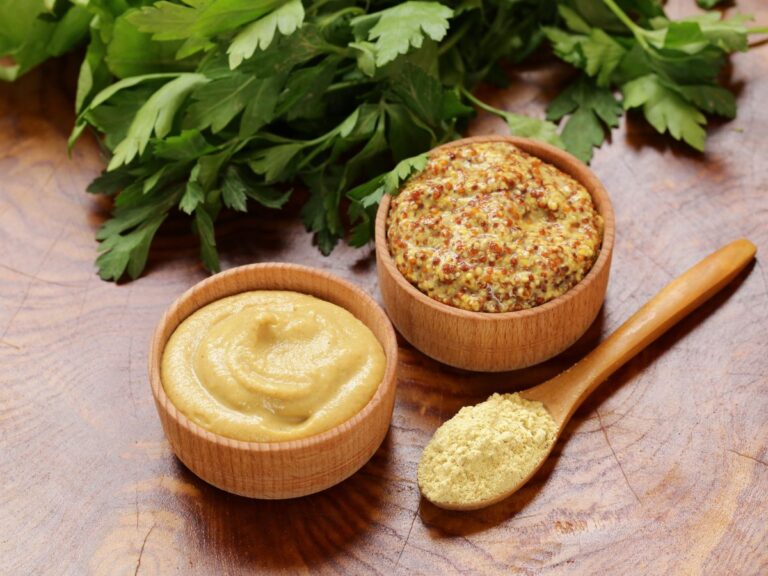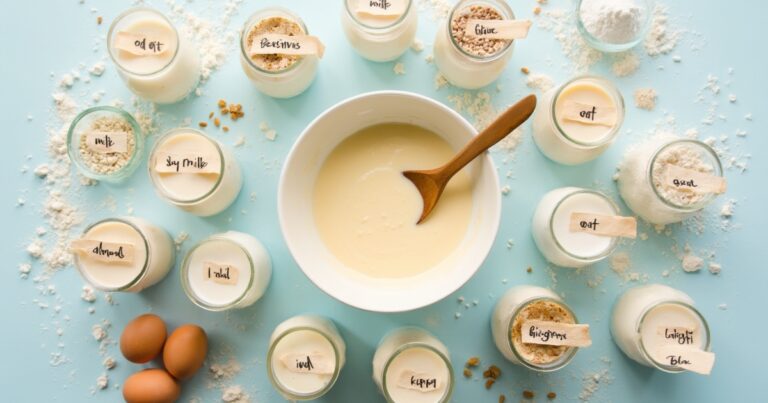The Tangy Sensation of Mustard Seeds: Mustard Taste & Texture
How do you describe the flavor and texture profile of Mustard? When you make a sandwich or slather your hot dogs in mustard your taste buds are going through a ride of spice and acidity like never before. But what is the exact flavor, what does Mustard Taste Like? Whether you are a professional Mustard fanatic or have a newfound love for mustard seeds and want to understand the taste then let’s get this started.
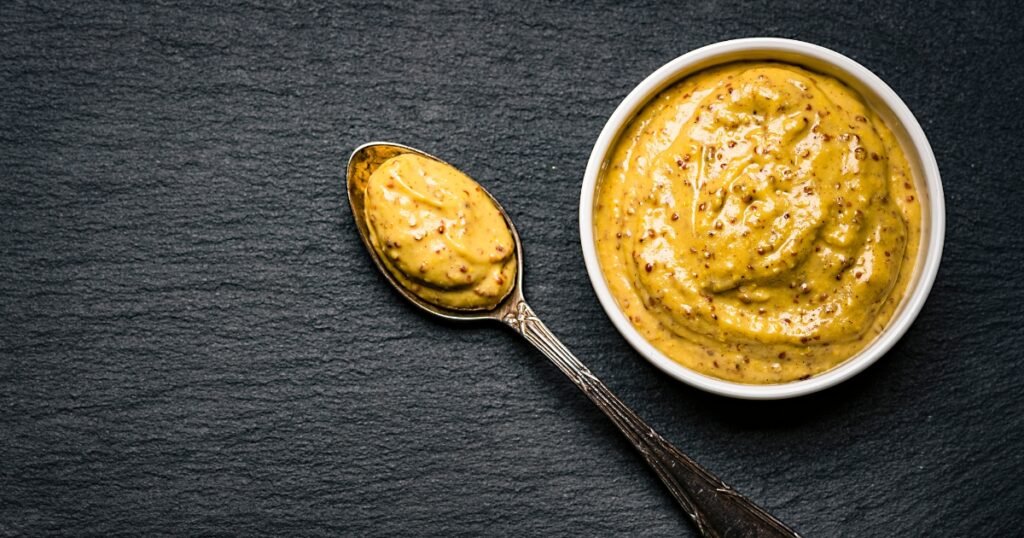
The Glorious Mustard Seed
Whether elevating a boring pastrami sandwich with whole grain brown mustard or using mustard powder to add depth to a gourmet sauce, mustard is a culinary chameleon.
But have you ever stopped mid-bite to ponder, “What does mustard taste like?” If you think about it, mustard is one of those familiar and complex flavors.
My introduction to mustard was a nice whole-grain spicy deli mustard squeezed generously over hot dogs at family barbecues. It was tangy, a little spicy, and undeniably vibrant.
The mustard seed might be small but holds a mighty source of flavor. These seeds are mixed with a liquid to create the mustard we know and love.
The taste of mustard can range from sweet and mild to spicy and pungent, depending on the type of mustard seed used and the preparation method.
Its texture varies significantly – from smooth and creamy to coarse and grainy. But that’s just scratching the surface.
The Humble prepared mustard also harbors some hidden health benefits, notably its surprising role as a natural remedy for heartburn. Intrigued? You should be.
We’ll traverse the spectrum of mustard flavors – from the classic tang of yellow mustard to the sophisticated bite of Dijon and even the rustic charm of whole grain mustard.
Grab the latest Jar from your monthly mustard subscription box, and let’s dive into the tangy sensation of mustard seeds.
Table of Contents
What Does Mustard Taste Like?
we’ll explore the various types of mustard – from the classic yellow mustard seeds that are a staple at picnics to black mustard seeds or the sophisticated Dijon that’s a must-have in gourmet kitchens.
Each type of mustard brings its own unique flavor and texture to the table, and understanding these differences can elevate your cooking and eating experience.
So, whether you’re a mustard aficionado or a curious newcomer, prepare to be enlightened on the tangy sensation of mustard seeds and how they can add depth and zing to your dishes.
The Mustard Flavor Spectrum
At its core, the flavor of mustard is tangy and pungent, a direct result of the ground mustard seeds and the liquid(typically apple cider vinegar) used to activate their potency.
However, the taste can swing dramatically from sweet yellow mustard seeds and mild to fiery brown mustard seeds, offering a broad spectrum of possibilities for enhancing food.
Let’s break down the flavor profiles of some of the most popular types of mustard and how they differ in both taste and texture.
Classic Yellow Mustard
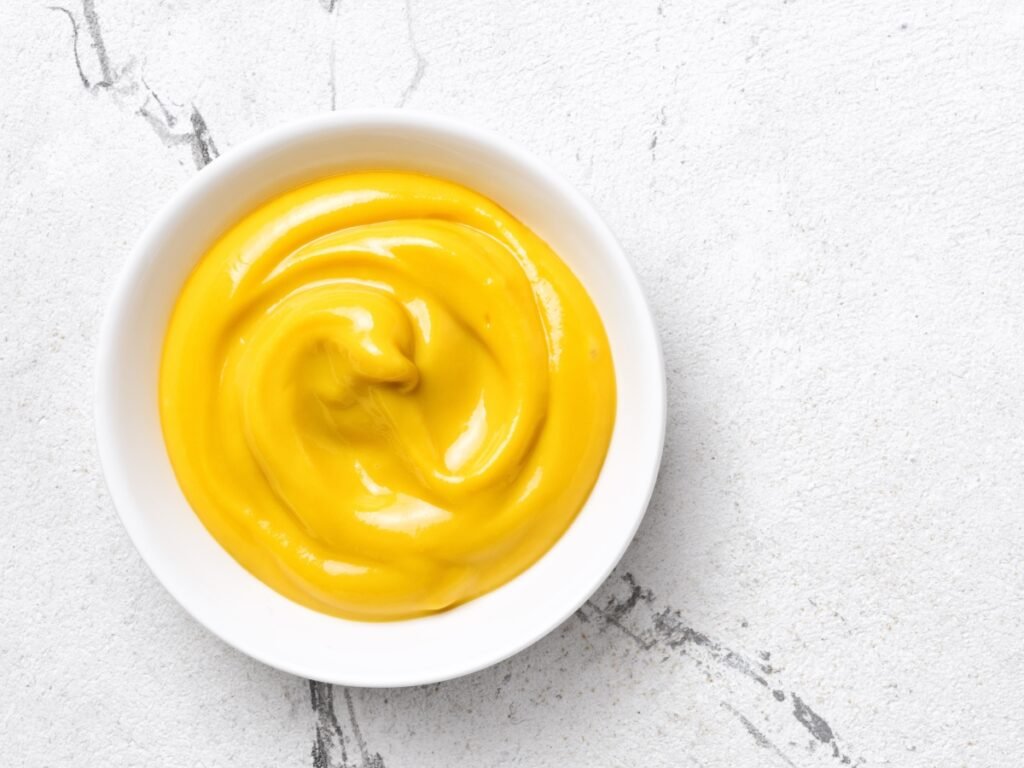
Flavor Profile: Sweet and mild with a distinct tanginess.
Texture: Smooth and creamy.
Culinary Uses: The perfect companion for hot dogs, burgers, and sandwiches, yellow mustard is the go-to condiment for adding a mild yet zesty kick without overwhelming the dish.
Dijon Mustard

Flavor Profile: Sharp, tangy, and a bit spicy, Dijon mustard offers a complex flavor that comes from the use of white wine or vinegar in its preparation.
Texture: Smooth with a slightly creamy consistency.
Culinary Uses: Ideal for vinaigrettes, marinades, and as a spread on gourmet sandwiches, Dijon mustard adds a sophisticated and rich flavor profile to dishes.
Whole Grain Mustard
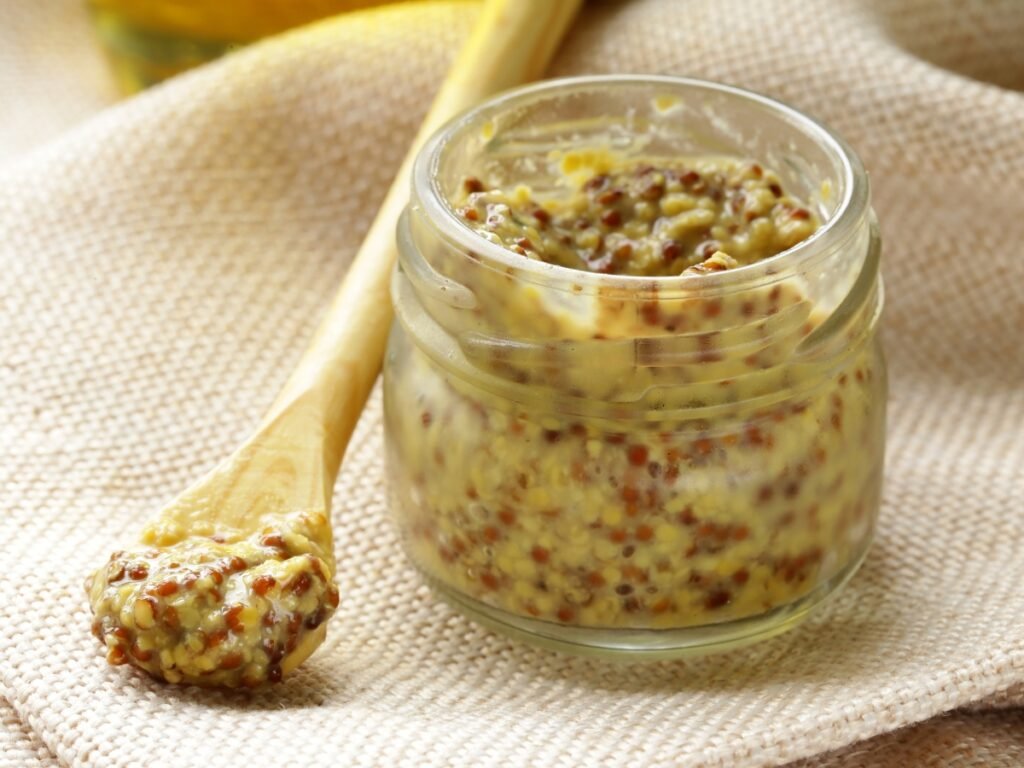
Flavor Profile: Bold and pungent with a noticeable bite from the whole mustard seeds.
Texture: Coarse and grainy, providing a delightful crunch.
Culinary Uses: Adds texture and a burst of flavor to meats, cheeses, and can elevate the simplest salad dressings or sauces.
Honey Mustard

Flavor Profile: Sweet and tangy, with the honey balancing out the mustard’s natural pungency.
Texture: Smooth to slightly coarse, depending on the mustard seed’s grind.
Culinary Uses: A versatile condiment for dipping, a popular dressing for salads, and a fantastic glaze for roasted meats.
Spicy Brown Mustard
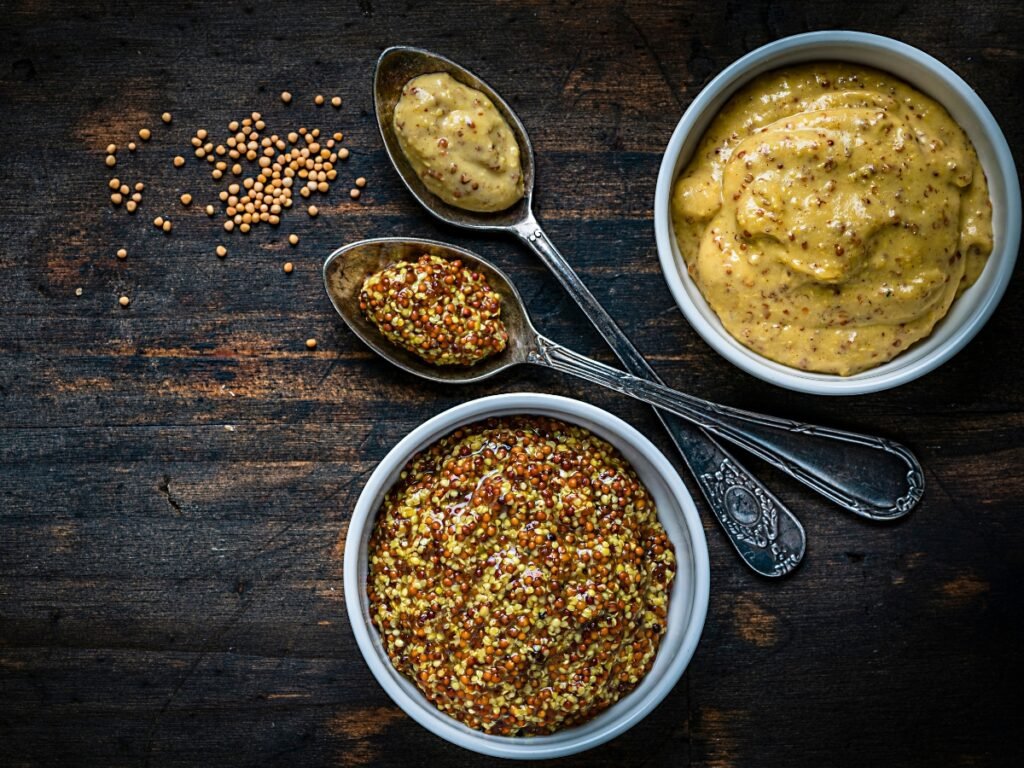
Flavor Profile: A robust, spicy flavor that’s more intense than yellow mustard but less sharp than Dijon.
Texture: Slightly coarser than Dijon but smoother than whole grain mustard.
Culinary Uses: A staple in deli sandwiches, it’s also great in hearty stews and as a base for marinades.
Mustard: More Than Just a Condiment
Beyond its ability to enhance the flavors of our favorite dishes, a mustard plant harbors an intriguing health benefit that has captured the attention of both culinary and health enthusiasts alike.
Its role as a natural remedy for heartburn is a lesser-known facet of this versatile condiment, offering a tangy solution to a common discomfort.
The Alkaline Nature of Mustard
Heartburn Relief: Mustard is alkaline-forming once metabolized, which means it can help neutralize stomach acid, offering relief from heartburn. A teaspoon of mustard can be a simple, natural remedy to mitigate heartburn symptoms.
Why It Works: The vinegar content in mustard helps lower the pH level in the stomach, which can alleviate the burning sensation associated with acid reflux. Moreover, mustard contains a decent amount of minerals like magnesium, known for its antacid properties.
Incorporating Mustard for Health
Moderation is Key: While mustard can relieve heartburn, it’s important to consume it in moderation. Not all mustards are created equal, and some, especially those with added sugars or high sodium content, might not be as beneficial.
Dietary Integration: Adding mustard to your diet can be as simple as incorporating it into vinaigrettes, marinades, or as a condiment for sandwiches and wraps. Opting for natural, minimally processed mustard can maximize health benefits.
Beyond Heartburn
Antioxidant Properties: Mustard seeds are a good source of antioxidants, which can combat oxidative stress and reduce inflammation in the body.
Digestive Health: The seeds also contain mucilage, a gelatinous substance that can help protect the digestive tract and promote gut health.
The multifaceted nature of mustard makes it a staple in both the kitchen and the natural remedy toolkit.
Its ability to transition from a flavor enhancer to a health aid exemplifies the complex benefits of this seemingly simple condiment.
Whether you’re using the small brown seeds to spice up your meals or ease a bout of heartburn, mustard is an indispensable ally in both culinary and health contexts.
Crafting Masterpieces with Mustard
Mustard isn’t just a condiment; it’s a culinary tool that, when wielded with creativity and understanding, can transform the ordinary into the extraordinary.
Its versatility allows it to meld into a plethora of dishes, enhancing flavors and adding depth that can elevate your cooking to new heights.
Elevating Flavors with Mustard
Balancing Acts: Mustard’s tangy and pungent flavors can balance out the richness in heavy dishes, providing a counterpoint that enhances the overall taste profile.
Marinades and Rubs: Incorporate mustard into marinades and rubs to tenderize meats and infuse them with flavor. The acidity of mustard breaks down proteins, making the meat more tender and flavorful.
Salad Dressings and Sauces: A spoonful of mustard can transform a simple vinaigrette or sauce, adding layers of flavor that range from tangy to spicy, depending on the mustard type.
Mustard in Recipes: Beyond the Spread
Roasted Vegetables: Brush a mixture of mustard, olive oil, and herbs onto vegetables before roasting to add a flavorful crust.
Baked Goods: Add mustard to bread dough or savory pastries for a subtle, tangy twist that complements the richness of the baked goods.
Dips and Spreads: Mix mustard with yogurt, mayo, or sour cream to create quick, flavorful dips for veggies, chips, or pretzels.
Tips for Cooking with Mustard
Start Small: Mustard’s flavor can be potent, so start with a small amount and adjust to taste.
Pair Wisely: Consider the mustard’s flavor profile and how it will complement the other ingredients in your dish. For instance, honey mustard pairs well with sweeter dishes, while spicy brown mustard is ideal for hearty meats.
Experiment: Don’t be afraid to experiment with different types of mustard in various dishes. Sometimes, the most unexpected combinations can yield the most delightful results.
Mustard in Everyday Cooking
Mustard’s ability to elevate a meal with just a dollop or a smear encourages both seasoned cooks and culinary novices to experiment and explore its potential.
Here are a few final tips for integrating mustard seamlessly into your daily cooking and dining experiences:
Quality Matters: Invest in high-quality mustard. The difference in flavor between artisanal mustards and mass-produced varieties can be significant.
Storage Savvy: Store your mustard properly to maintain its pungency and flavor. A cool, dark place is ideal; once opened, the refrigerator will help preserve its character.
Creative Pairings: Think beyond traditional pairings. Add mustard to unexpected dishes like scrambled eggs or a topping on a pizza for a tangy twist.
Conclusion: A Journey Through Mustard’s World
As we’ve seen, mustard is more than a sidekick to sandwiches and hot dogs; it’s a dynamic ingredient capable of transforming dishes, soothing ailments, and bringing joy to our palates.
I invite you to view mustard through a new lens, appreciating its nuances and embracing its potential to transform your cooking.
Whether you’re whisking it into a dressing, spreading it on your favorite sandwich, or using it to soothe a bout of heartburn, mustard is a testament to the beauty of simplicity in the culinary world.
So open that jar, and let the vibrant, tangy sensation of mustard seeds inspire your next culinary adventure.
FAQ and Additional Information
Is mustard supposed to be Sour or Bitter?
Mustard is primarily known for its tangy and pungent flavor rather than being distinctly sour or bitter.
The tanginess can sometimes be perceived as a mild sourness due to the vinegar or acid used in its preparation.
Mustard seeds can have a slight bitterness, especially when raw, but the other ingredients in the mustard usually balance this out.
So, while mustard can have sour or bitter notes, its defining taste is tangy and spicy, depending on the type and preparation.
What does American-style mustard taste like?
American-style mustard, often called yellow mustard, is known for its bright yellow color, which comes from the addition of turmeric.
It tastes mild and tangy with a slight vinegary note and a hint of spice, but overall, it is less spicy and has a more subdued flavor than other types of mustard like Dijon or whole grain.
The texture is smooth and creamy, making it a versatile condiment that complements various dishes, particularly classic American fare like hot dogs, burgers, and sandwiches.
Its flavor profile is designed to be accessible and not overpowering, allowing it to enhance the taste of foods without dominating them.




